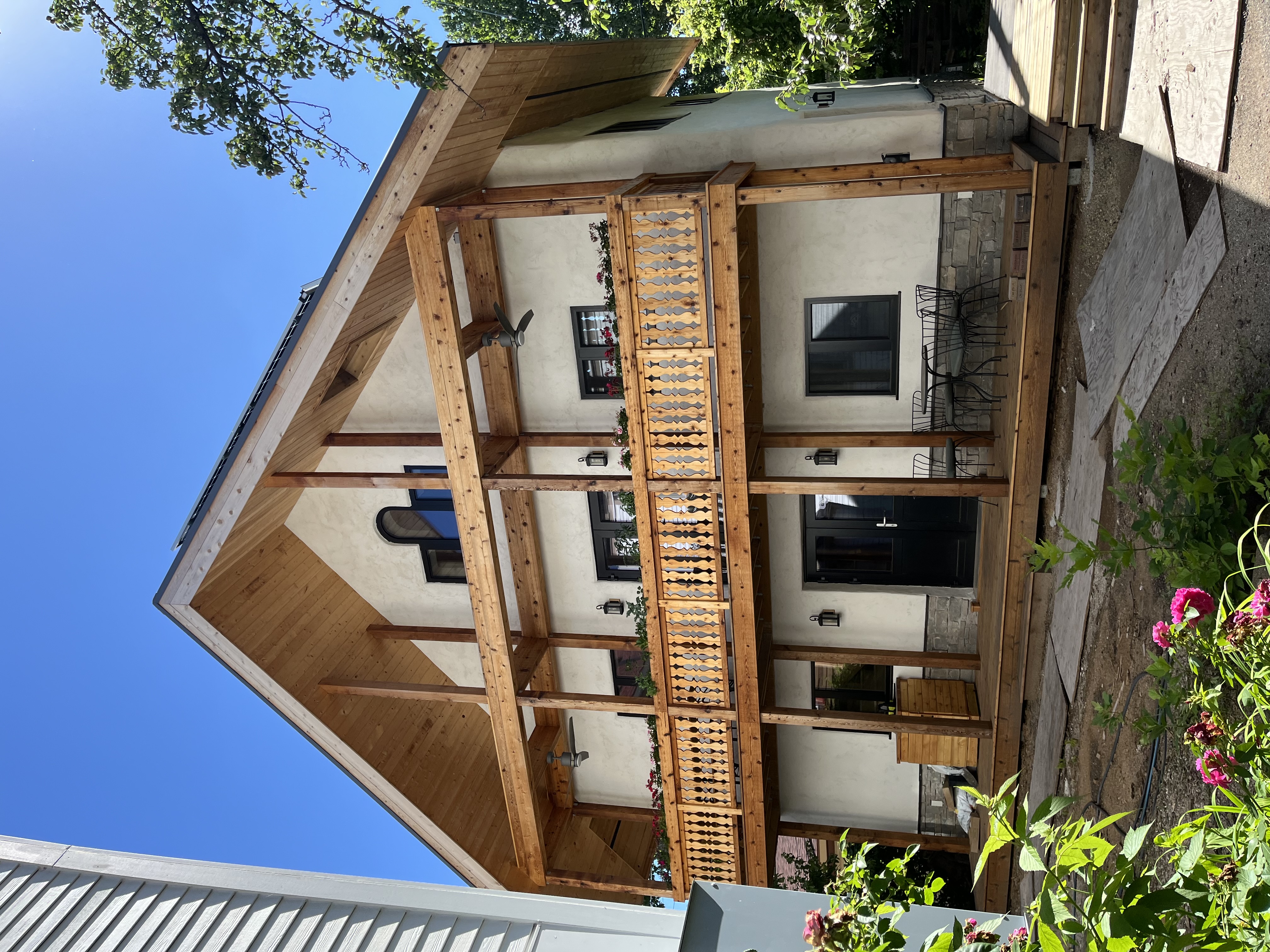Banking on a Net Zero Electricity Dream Home with the Help of Old National
Five years ago, Minneapolis residents Peter Schmitt and Katie Jones gave up their cars and, with the help of Old National Bank, revved-up their idea to create a Net Zero Electricity Home – today known as the Uptown Strawhouse.
No strangers to eco-friendly living, Peter and Katie met as teenagers at a summer camp with German roots and environmental projects for campers to participate in. Both went on to work in the environmental field – Katie as a community energy program and policy consultant at a local energy efficiency nonprofit, and Peter as a community solar developer at a Minnesota-based solar company.
About 10 years ago they landed in the Lowry Hill East neighborhood of Minneapolis (also known as “The Wedge,” near Uptown), settling in a triplex, which they shared with tenants. The couple also has another rental property a few blocks away. Over the years the couple has made energy efficiency upgrades to the triplex to improve its carbon footprint, including new windows, multiple layers of insulation, new siding, a rooftop solar array, and converting the heating to air source heat pumps. However, there wasn’t room to grow. So, they embarked on converting the detached garage in the back of the triplex into a new home.
Though many builders have worked toward more sustainable living options with solar panels, heat pumps, water efficiency and more, Peter and Katie were inspired by sustainable buildings in Germany and decided to try their hands at building a home with straw bale insulation.
According to Andrew Morrison, head of strawbale.com, “Straw bale wall systems are three times more energy efficient than conventional framing, saving 75% in energy costs. Straw bale houses are three times more fire-resistant than conventional homes, which is becoming more relevant as the risk of wildfires grows.”
In Minnesota, the idea of a home built with straw bales and plaster was met with pause. Specifically, the couple found themselves in search of a lender who would follow them on their ambitious journey.
“We talked to a lot of banks,” Peter remembers. “It was really rewarding to talk to Old National Bank. This is a unique project, and we needed a banking partner willing to go on this journey with us.”
That journey has now lasted over four years. Business Banking Relationship Banker Charity Weibel has been with Peter and Katie throughout the whole process, all while also having two babies over the course of the project.
“Because this was such an out-of-the-box project, we had to get creative and get all the major players at the bank involved,” Charity said.
With Charity’s help, Peter and Katie were able to work through all the paperwork and challenges with city codes, liens, COVID, supply chain issues, and more. Throughout the building process, the couple relied on numerous vendors, contractors, builders, and volunteers to bring the strawhouse to reality. Along with their goal of building a Net Zero Electricity Home (which produces more electricity than it consumes), the couple hoped the more volunteers involved, the more they could educate the community about eco-friendly living options.
“We don’t expect everyone to undertake a project like this, but we want people to know that it’s possible,” Peter said.
They also hope to show that there is a growing demand for eco-friendly products, so that hopefully in the future, a project like the strawhouse won’t seem so far-fetched.
“I know this has been a crazy-long project, but it has been great to work with Charity and Old National Bank,” Peter said. “I truly appreciate ONB being willing to think outside the box on climate and light infill projects.”
Charity recalls that although the project was unique, “Peter and Katie were the ideal clients we could go out on a limb for,” she said.
To follow along with Peter and Katie’s journey, check out their blog at uptownstrawhouse.weebly.com or on Instagram by following #UptownStrawhouse.
To learn more about Old National’s home loan or special assistance programs, go to oldnational.com/personal/home-loans.
